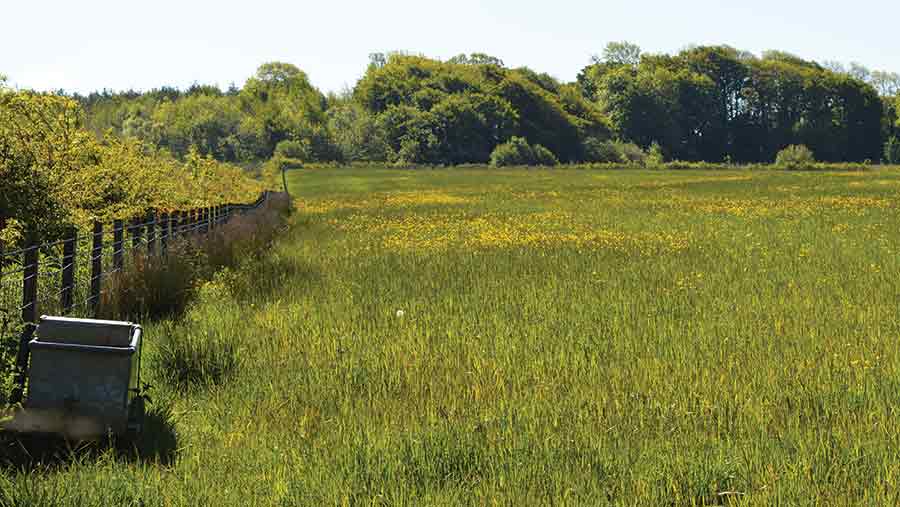Regional outlook: Low farmgate prices will push more farms on to market in north of England
 Broughton Lodge, near Cockermouth, West Cumbria, had a guide price of £1.255m.
Broughton Lodge, near Cockermouth, West Cumbria, had a guide price of £1.255m. This week’s regional farmland outlook heads to the North East and North West of England, where agents say low farmgate prices are likely to push an increasing number of farms and blocks of land on to the market in 2016.
With commodity prices at rock bottom, land buyers have become more discerning in the region over the past two years, say agents, and farmer buyers in particular are content to hold out for quality offerings before parting with their cash.
Land market values – North West and North East England
| 12 months to September 2014 | 12 months to September 2015 | |
| No of farms publicly advertised nationally | 80 (12 months to October) | 85 (12 months to October) |
| Average value of ‘all types’ of farmland | £6,829 | £6,768 |
| Average value of ‘prime arable’ farmland | £10,079 | £10,079 |
| Average value of ‘Grade 3 arable’ farmland | £7,069 | £6,895 |
| Average value of ‘Grade 3 grassland’ | £5,523 | £5,523 |
Tony Rimmer
Rostons, North West
- This year we have seen more whole farms come to the market within Cheshire and adjoining counties. Some good large farms have been marketed and while they have sold, it is clear that purchasers are more discerning than of late.
- In 2016 we are likely to see more farms coming to the market, particularly if the current crisis within dairying leads to some having to make a decision to move.
- Development land and rollover money continues to have an influence, particularly as more land gets planning permission.
- However, farmland has been purchased by working farmers looking to expand.
- A good dairy unit of between 250 and 300 acres would still create substantial demand, as would good parcels of flexible cropping land of between 30 and 60 acres.
- Location continues to be the main driver and certain locations have limited demand whereas others are extremely strong and it really is a case of knowing your market.
David Quayle
H&H Land and Property, North East
- Finances are now much more limited than they were, therefore purchasers will be very cautious. This will probably result in the market stabilising.
- The best prices this year have been achieved by selling to adjoining neighbours who want to extend their acreages, otherwise the main buyers are still non-farmers looking for investment opportunities.
- The most active buyers have been farmers with rollover money and also sitting tenants being the given the opportunity to acquire. The volume of interest is still there, however, keenness to compete is not as strong and the majority are more cautious.
- Supply remains tight in County Durham. Good quality, large, ring-fenced farms are few and far between. There is a trickle of small parcels of land coming on to the market from those who want to release equity for personal reasons or to restructure their debts.
- The hardest land to sell is poor quality pasture, while the best are good-quality arable blocks with good access, or land with development opportunities.
Ed Clark
Fisher German, North West
- Demand is not as strong as it was 12 months ago but I don’t think there is any evidence that prices have dropped. Land and farms are taking longer to tie up and generally there are only one or two prospective buyers. Sales are being agreed through negotiation rather than simply inviting best offers.
- Logically, we should be expecting more land and farms on the market in 2016 but there is nothing yet to indicate that this will be the case.
- We have sold two farms this summer; one was bought in two parts by different farmer buyers, neither immediately local and both with rollover money. The other farm, costing in excess of £2m, was bought by a business person wanting to start farming.
- Some tenant farmers have talked to us about accelerating their retirement plans if the current problems within the industry continue for another 12 months.
- Poorer grade land is definitely less attractive, whereas 12 to 24 months ago buyers wouldn’t have been so discerning.
Chris Edmunds
Davidson & Robertson Rural, North West
- The more attractive units have sold well in 2015, however more marginal units, especially those without forestry interest, have been stickier. There have been a number of small parcels of ground sold to release capital along with larger farming units within Cumbria and Northumberland, both on and off-market.
- Our outlook is similar to 2015 with more land availability as commodity prices drop and BPS and environmental payments have a negative impact on farm incomes. Owners may look to mitigate this by offloading non-strategic or outlying land.
- The buyer profile has remained a mix of farmers, particularly neighbours, and investors. Farmers have been more cautious and selective when assessing potential purchasers, particularly those who are not adding locally to their holding. There has been more supply of land to the market which has allowed buyers to be more choosy. We are increasingly doing deals off-market and this also looks set to continue.
- There continues to be interest from strategic developers who are actively looking to tie up land with development potential. There is little evidence locally from those having done development deals that this is distorting the market.
- Good productive units and accommodation land remain sought after in the right location.
See more
